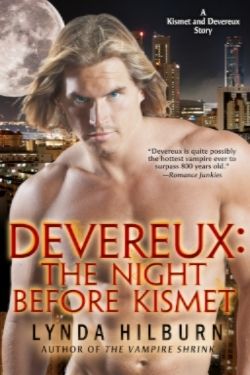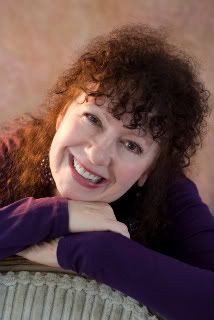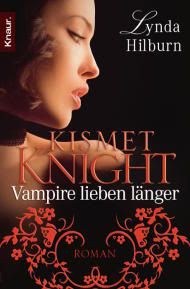Guest Blogger: Linda Acaster
The winner of Linda's book is: Julia Rachel Barrett. Congratulations, Julia! Send me your contact info and I'll pass it along to Linda. Thanks to everyone who participated.

What are we doing when we toss a coin into a fountain in the middle of a noisy shopping mall? Making a wish? Trying to change our luck? How does this work in our cynical rush-rush world of the 21st century?
The simple answer is that it doesn’t. What we are subconsciously doing is enacting a rite at least 3,000 years old, invoking the female deity of the pool to remain benign and keep producing life-giving, drinkable, water.
Here in the British Isles, long before the introduction of coinage, items of wealth were being cast into sacred pools: exquisitely decorated swords, helmets, dishes and torcs – the twisted gold neck-rings that were the emblem of authority in Celtic Britain – sacrificed on behalf of the extended family, or people of the tribe.
wealth were being cast into sacred pools: exquisitely decorated swords, helmets, dishes and torcs – the twisted gold neck-rings that were the emblem of authority in Celtic Britain – sacrificed on behalf of the extended family, or people of the tribe.
The larger, tribal sacrifices tended to be clustered around the year-end festival of Samhain, when the crops were in, the land was dying back for winter, and it was believed that the barrier between this world and the Otherworld was thin enough to allow the dead, and Otherworld beings, to impart wisdom to the living. When Christianity sought to extend its influence, the churches built on known sites of these divination rites were not named for individual saints, but for All Hallows, or All Saints & All Souls, so that their annual celebrations would eventually obliterate the pre-Christi an rites which had taken place there at the time of year we now know as Halloween.
an rites which had taken place there at the time of year we now know as Halloween.
But not every site was obliterated by a Christian church, though many springs were made into Christian pilgrimage sites, their waters often attributed with medicinal qualities, and nearly always presided over by the Virgin Mary – Christianity’s female deity.
Springs in smaller communities became first the village pond, usually with a church close by, or eventually the village pump. But not all. Close to where I live in East Yorkshire a boggy field was excavated on the hearsay of the oldest residents remembering tales from their grandparents. Beneath the silt a stone well-housing was uncovered, its spring still producing clear, drinkable water. A picture-book roofed cover has been erected over it, and a thorn hedge planted nearby in recognition that this was once a rag well, where maidens ventured late on midsummer’s night to circle the spring while reciting a charm in the hope of seeing the face of their husbands-to-be.
Not all springs have been rendered quaint. On the North York Moors, near the village of Stape, is what is now referred to as Old Wives Well. The moor would have been a treeless place when the Sixth Legion Victrix laid a Roman road beside it, but the road has long returned to nature, and Britain’s modern Forestry Commission has covered the surrounding land in quick-growing pine – except that the glade surrounding the moss-covered well-housing is all deciduous woodland of birch and alder, ancient species native to these islands. Hanging in their thin branches are offerings of ribbon, charms and tiny bells, augmenting the coins pressed into the moss shrouding the well-housing.
The glade is hidden from the modern road, only findable with an Ordnance Survey map. It’s a place for contemplation, for drinking in the quiet and the myriad tones of green. Which begs the question… does a religion remain potent as long as one person believes, as long as one person cares enough to invoke its spirit?
This was my starting point for Torc of Moonlight, a paranormal thriller set in the verdant university campus of my home city of Hull, with its museum of Celtic reconstructions and excavated Romano-British mosaics. Alice is obsessed with uncovering the shrine to a forgotten Celtic water goddess she believes lies on the Moor close to the Roman road. Nick is obsessed with her, and keeps rationalising the disturbing changes in himself until his dual personality splits away and he realises that his sports training regime is not to hone his rugby skills.
Torc of Moonlight explores belief and betrayal across history and carries a triple storyline, including a Celtic why-dunnit. It’s the first in a trilogy set in university cities surrounding the North York Moors. Visit http://www.lindaacaster.com/ to read an opening extract and the growing reviews under its blog, and http://lindaacaster.blogspot.com/ for up to the moment info.
The paperback is available from Amazon, with the Kindle version coming soon. There is also ePub format from Book2Book, and PDF format from Linda’s blog.
The simple answer is that it doesn’t. What we are subconsciously doing is enacting a rite at least 3,000 years old, invoking the female deity of the pool to remain benign and keep producing life-giving, drinkable, water.
Here in the British Isles, long before the introduction of coinage, items of
 wealth were being cast into sacred pools: exquisitely decorated swords, helmets, dishes and torcs – the twisted gold neck-rings that were the emblem of authority in Celtic Britain – sacrificed on behalf of the extended family, or people of the tribe.
wealth were being cast into sacred pools: exquisitely decorated swords, helmets, dishes and torcs – the twisted gold neck-rings that were the emblem of authority in Celtic Britain – sacrificed on behalf of the extended family, or people of the tribe.The larger, tribal sacrifices tended to be clustered around the year-end festival of Samhain, when the crops were in, the land was dying back for winter, and it was believed that the barrier between this world and the Otherworld was thin enough to allow the dead, and Otherworld beings, to impart wisdom to the living. When Christianity sought to extend its influence, the churches built on known sites of these divination rites were not named for individual saints, but for All Hallows, or All Saints & All Souls, so that their annual celebrations would eventually obliterate the pre-Christi
 an rites which had taken place there at the time of year we now know as Halloween.
an rites which had taken place there at the time of year we now know as Halloween.But not every site was obliterated by a Christian church, though many springs were made into Christian pilgrimage sites, their waters often attributed with medicinal qualities, and nearly always presided over by the Virgin Mary – Christianity’s female deity.
Springs in smaller communities became first the village pond, usually with a church close by, or eventually the village pump. But not all. Close to where I live in East Yorkshire a boggy field was excavated on the hearsay of the oldest residents remembering tales from their grandparents. Beneath the silt a stone well-housing was uncovered, its spring still producing clear, drinkable water. A picture-book roofed cover has been erected over it, and a thorn hedge planted nearby in recognition that this was once a rag well, where maidens ventured late on midsummer’s night to circle the spring while reciting a charm in the hope of seeing the face of their husbands-to-be.
Not all springs have been rendered quaint. On the North York Moors, near the village of Stape, is what is now referred to as Old Wives Well. The moor would have been a treeless place when the Sixth Legion Victrix laid a Roman road beside it, but the road has long returned to nature, and Britain’s modern Forestry Commission has covered the surrounding land in quick-growing pine – except that the glade surrounding the moss-covered well-housing is all deciduous woodland of birch and alder, ancient species native to these islands. Hanging in their thin branches are offerings of ribbon, charms and tiny bells, augmenting the coins pressed into the moss shrouding the well-housing.
The glade is hidden from the modern road, only findable with an Ordnance Survey map. It’s a place for contemplation, for drinking in the quiet and the myriad tones of green. Which begs the question… does a religion remain potent as long as one person believes, as long as one person cares enough to invoke its spirit?
This was my starting point for Torc of Moonlight, a paranormal thriller set in the verdant university campus of my home city of Hull, with its museum of Celtic reconstructions and excavated Romano-British mosaics. Alice is obsessed with uncovering the shrine to a forgotten Celtic water goddess she believes lies on the Moor close to the Roman road. Nick is obsessed with her, and keeps rationalising the disturbing changes in himself until his dual personality splits away and he realises that his sports training regime is not to hone his rugby skills.
Torc of Moonlight explores belief and betrayal across history and carries a triple storyline, including a Celtic why-dunnit. It’s the first in a trilogy set in university cities surrounding the North York Moors. Visit http://www.lindaacaster.com/ to read an opening extract and the growing reviews under its blog, and http://lindaacaster.blogspot.com/ for up to the moment info.
The paperback is available from Amazon, with the Kindle version coming soon. There is also ePub format from Book2Book, and PDF format from Linda’s blog.
**********
Linda will be giving away a copy of her book to one commenter. The winner will be selected and posted on Tuesday evening. Stop back by to see if you won.


























